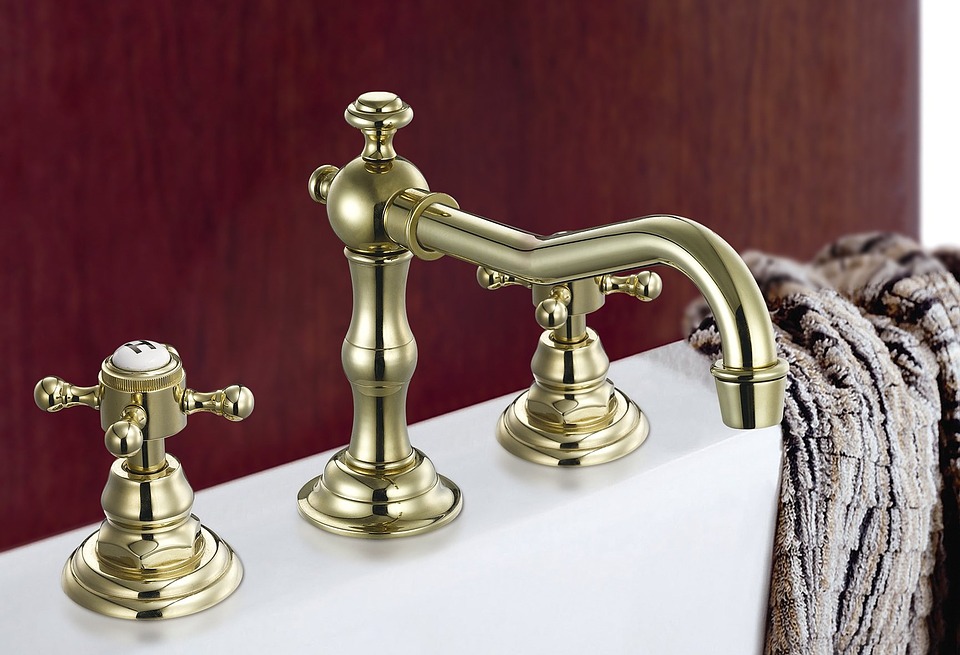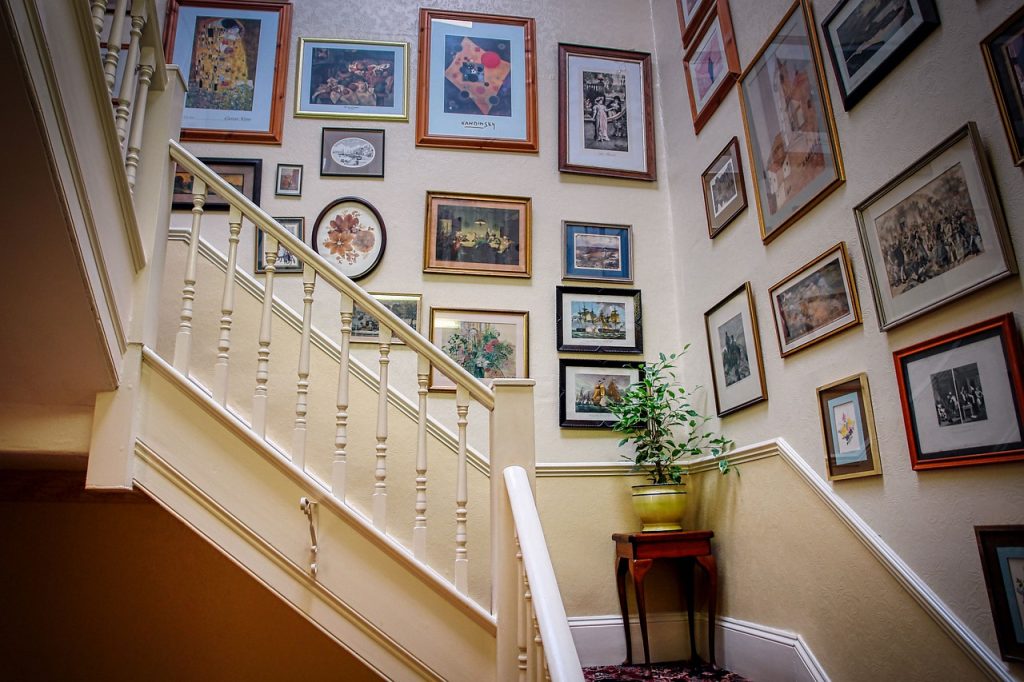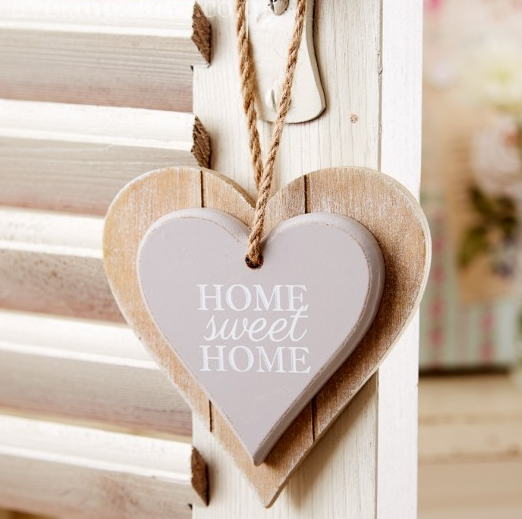Feeling safe and secure is critical to our health, development and success. Feng shui aims at creating safe, healthy and harmonious environments for working and living to allow us to thrive as well as feel happy and secure.
Albert Einstein asked this very potent and as always a current question:
“I think the most important question facing humanity is, ‘Is the universe a friendly place?’ This is the first and most basic question all people must answer for themselves.
For if we decide that the universe is an unfriendly place, then we will use our technology, our scientific discoveries and our natural resources to achieve safety and power by creating bigger walls to keep out the unfriendliness and bigger weapons to destroy all that which is unfriendly and I believe that we are getting to a place where technology is powerful enough that we may either completely isolate or destroy ourselves as well in this process.
If we decide that the universe is neither friendly nor unfriendly and that God is essentially ‘playing dice with the universe’, then we are simply victims to the random toss of the dice and our lives have no real purpose or meaning.
But if we decide that the universe is a friendly place, then we will use our technology, our scientific discoveries and our natural resources to create tools and models for understanding that universe. Because power and safety will come through understanding its workings and its motives.
God does not play dice with the universe.”
Feng shui for feeling secure and safe
The aim of feng shui is to optimise your home and workplaces, so they work for you and feel safe and secure. Feeling safe and secure is of paramount importance to our wellness and performance. To thrive, grow, learn and develop we need to feel safe. Unfortunately, in the times of radical uncertainty, doomsday bunkers and underground shelters are trending again among preppers/survivalists and unless you have lots of cash, these luxury bunkers are unaffordable for most people. But there are a lot of things you can do in your existing home to feel safe and secure.
Feeling out of control – do something
A sense of control is essential to our survival. In times of uncertainty, it’s useful to remember that the opposite of fear is love (as suggested by the Course in Miracles) so anything that you do in your home, with love and gratitude and that empowers you and adds a sense of control will make it worthwhile. Get a new plant and bring some fresh foliage inside will reconnect you with nature. If you have a large collection of books you can rearrange them from time to time in different ways. For example, stack some books horizontally and some vertically which will stop the bookshelves look rigid and overthought. Some people colour code their bookshelves by arranging them into sets of colours (the rainbow set for example as JK Rowling below).
Another simple way to refresh your home is to rearrange your artwork and pictures which will breathe new life into your home and also bring new meaning and context to your artwork.
Completing unfinished, small tasks such as fixing things that you’ve been avoiding or neglecting for ages will give you a sense of completion and achievement. Just do one little thing now.
Change and healing
Change is constant. Things will pass. Nature is a great reminder of things changing, growing and thriving. Nature is healing. Florance Nightingale was very much aware of the healing power of nature. In 1859, she wrote that when she was ill, her healing was quickened after she got ” a nosegay of wild flowers”. She noticed that “most acute suffering when the patient can’t see out of the window”. Since then many studies confirmed the same findings of the importance of nature, especially in hospital settings for a speedy recovery and also in prisons where access to grass and trees reduces violent outbreaks and crime (source: The Well-Gardened Mind: Rediscovering Nature in The Modern World By Sue Stuart-Smith). Frederick Law Olmsted, the designer of Central Park in New York and the American doctor George Miller Beard coined the term “neurasthenia” as a “disease of civilisation”. Looking at nature does many positive things: we connect, we take notice, we give, we keep learning and we stay active. A big predictor of home satisfaction is the view from your windows and connection to the world outside. If you have a great view, reflect it inside with large mirrors or bounce light with reflective paint. If you don’t have that, invest in a full photographic wallpaper with your favourite landscape or view to create the same nourishing feelings.
How to boost oxytocin and endorphins
Research done by Sonja Lyubomirsky at the University of California, suggests that our happiness and wellness is determined by our circumstances (10%), our thoughts, mindsets and actions which include healthy lifestyle habits such as diet, exercise, mediation and good sleep (40%) and our genetic makeup and environment (50%). So changing how you feel and think, as well as your environment is a powerful way forward to control your wellbeing.
Oxytocin is a hormone that is released when we feel safe and secure. Oxytocin is also known as a bonding and love hormone which allows us to trust and learn as we grow up. Oxytocin is an evolutionary antidote for stress hormone cortisol. Optimising your furniture positioning and arrangement can help to boost oxytocin release and reduce stress.
Naturally, oxytocin is released with touching and hugging. If you have a pet, physical contact will up your oxytocin. If you don’t have pets, looking after plants will do the same according to biophilia hypothesis. If that’s not possible, photographs of family and friends can boost oxytocin levels. Social media actually can boost oxytocin (of course, too much social media can work against you as well).

“I love you” releases oxytocin
Oxytocin is sometimes called the love molecule so tell friends and family around you that you love them. Think about the things you love and represent them around your home or workplace. The priming effect is a key scientific principle of how feng shui works. Have things you love around and that make you feel good and happy. Anything that you like or love can also boost your endorphine effect (happy hormones) which has been researched extensively for its positive benefits. Place things that will remind and make you smile. “Hearty laughter is a good way to jog internally without having to go outdoors.” said Norman Cousins, author of Anatomy of an Illness where he described how he cured himself of a crippling illness with laughter (and high doses of vitamin C). Positive thinking or placebos can work miracles, even if you know that they’re placebos and the placebo effect can get stronger over time, as research suggests.
Having a bath is another way to boost your oxytocin. It will also have a grounding/earthing effect.
Oxytocin studies show that receiving gifts raises oxytocin. Surprise somebody with a simple gift. It doesn’t have to be anything big or even physical. A compliment will do. Read more how you can “hormonise your home”

Having a bath has a grounding and earthing effect as well as it boosts oxytocin
Make your home physically secure
Our homes must feel secure on the physical level and meet our basic needs for shelter, safety and stability. Whether you own or rent, physical security is important for home satisfaction. Ask the property seller, builder or landlord for a copy of the building control certificate to ensure that your home is safe.
A sense of connection
As social animals, we thrive in tribes and groups. Isolation and loneliness kill, as plenty of research, suggests. A 2009 study reviled that loneliness had the same adverse impact on lifespan as smoking 15 cigarettes a day (and loneliness fosters addictions as well). GPs in the UK report that one in five patients come to them “primarily because of loneliness”. Loneliness is defined as “the subjective feeling that you’re lacking the social connections you need.” A sense of connection can be enhanced by actively working with your home or workplace. Humans project intent and emotions on to anything from dolphins to plants to paper clips to homes by anthropomorphising everything. Children believe that “objects have rights”. Most cultures have beliefs that things and homes have souls. Since it’s a subjective feeling, visual cues can remind you about the connections you’ve had in the past or you have now with friends and family as well as the larger life. Enhance your social connection by having lots of pictures of friends and family and anything that is meaningful to you and you care about.
“We anthropomorphise everything”
Eleanor Sandry, Curtin University, Perth
Staircase
Functionally speaking, a staircase is a mode of transport from A to B or change and offer a way of instilling stability in transition – a kind of spine of our homes. Thanks to advances in technology and engineering, you can have any type of staircase. A quick look at Instagram and you can see true creativity and ingenuity when it comes to staircases. Examples of types of staircases are helical, colourful, transparent or see-through, staircase-cum-fireplace, circular, art installations, stairs hiding storage or cupboards, glass (cantilevered), wow factor, and so on. The most important aspect of any staircase is security and stability, ideally with risers (no empty gaps, spaces between the steps).

How to feng shui staircases
In feng shui, front door facing staircases don’t have a great reputation, because facing them is no fun and implies an effort of climbing them. Ideally, in perfect feng shui, you shouldn’t see the staircase when entering the house. To remedy this, make the staircase a feature staircase that you or others see to add an instant wow factor with drama, fun, interest. For quick ideas, just visit Instagram. Note, that UK building regulations are much more restrictive than overseas so not everything will be allowed. The rules for staircases require to have at least 2m headroom above, a pitch no steeper than 42 degrees and gaps no wider than 10cm so kids don’t fall through threads or balustrades. Ideally, handrails and balustrades should feel nice to touch so you can curve down the staircase without lifting your hand once (not like the one above which is broken up into segments).
Modern, open-plan layouts are making possible to make stairways focal points and timeless, unique statements. There are many ways to work with staircases: 1) match the original stairs, 2) use stone in small places, 3) treat it as a sculpture, 4) vary the shape and style and finally, 5) build it off-site as a customised, bespoke one.
Display sentimental or nostalgic items – to mirror yourself
80% of people who are the happiest at home say that their homes reflect who they are. Nostalgia has been defined as sentimentality for the past and is unique to different people. Research shows that nostalgia can be used to combat loneliness and improve resilience. It can also boost creativity (think of all those nostalgic songs). A 2015 study published in the Journal of Experimental Social Psychology linked nostalgia to openness to new experience and creativity. There is a kind of cooperative activity between memory and reward systems in your brain that plays a very specific role in how we experience nostalgia. Nostalgia is context-dependent and is heavily influenced by environmental cues. Our memories are tied to and triggered by sights, sounds and smell.
Top tips to imbed more nostalgia in your home or workplace are:
• Displaying a cover of the CD or single that reminds you of a specific time when the song was released.
• Photos from an old high school yearbook or photos of friends remembering all the people you knew when you were a teenager.
• Having a particular food or drink that reminds you of a special place you once lived or visited.
• Books that remind us about a happy time can boost our resilience. During difficult times, reading complex works of classic literature can boost brain power (and memory into old age) and quality life, research from the University of Liverpool and Professor Philip Davis suggests.
• Round, curvier things, designs and shapes are more comfortable to the eye and body. We like to be embraced and comforted by cushions, armed chairs and soft sofas.
How to feng shui your wall gallery
Any wall can be transformed into a gallery wall with a collection of artwork, paintings, prints, photos, maps and typography. Framing and grouping them offers a feng shui opportunity to boost different domains of your life according to the bagua model. Any image no matter how small has some significance to you and your life’s passions. Define your style: formal, eclectic, regular, ordered, symmetrical, random, rhizomatic. When planning the layout, start with large pieces and then compose the rest around them. Make sure you’ve planned everything and then start hammering holes. It’s not a good idea to hang artwork too high and when hanging glass-fronted pictures take any reflection from lights and windows into account and how they will bounce light around and potentially illuminate dark corners. When it comes to frames, anything goes and whatever works. One novel idea I’ve picked on Instagram is placing printed photographs in old or vintage jars or bottles, with the photos facing outwards.
So, how to reference the images according to the bagua model? Any image will fall into one of the nine areas of bagua and represent: your career/vocation/life path, relationships, family and friends, luck/blessings/wealth, health, travels, creativity/new projects and children, knowledge and wisdom and finally your successes/achievements, enlightenment and art. When hanging anything on the wall, think what does it mean to you, what does it represent and just appreciate it as value.
Home sweet home – your material comforts
The main function of your home is to feel safe and at ease. If you want to broadcast your tastes and status through your home interior deco, it’s up to you. Gaston Bachelard in The Poetics of Space (probably the most exquisite philosophical treaty on homes) said, “…the house shelters day-dreaming, the house protects the dreamer, the house allows one to dream in peace.” And the peace of mind is in the present state, not in the future or past. So make small, simple material adjustments to your home and workplace to feel at ease and comfortable, now.
Summary
One of the fundamental functions of feng shui is to help you to stay and feel safe and secure in your immediate environment, so you’re free to focus on what you want to do. And create a home where you like to spend time and relax. Environmental stressors are a huge drain on your energy. In feng shui, the management of your energy is the most important principle. Energy is a charge (in physics terms), and when you take charge of your home or workplace, you take charge of your life and your business. Do something, simple, practical and positive to make your home more loveable, comfortable, resilient, cosy and safe.

Home sweet home
Top feng shui tips how to make your home and workplace feel safe and secure
- Arrange your furniture in such a way, so you’re sitting in the command, power position which is furthermost from the door and with the support of a wall.
- Make your home secure. Make sure that your front and back doors are strong, secure and doorbells work.
- Minimise any dangerous aspects of your interior design, especially around doors and staircases, so you don’t trip or hurt yourself. Fix things.
- Check the layout of your home and the energy flow as well as the traffic, ie how you move from one space to another. Is it all ergonomically arranged?
- Sleep in a safe space, free from geopathic stress and electromagnetic pollution (switch off wifi for the night and put your mobile on the airplane mode) as well as air pollution. Position your bed in the power position of your bedroom. Make your home resilient and immune to negative internal and external stressors.
- Have a solid headboard and footboard. You need to feel safe to have a good sleep which is critical for your health and wellness.
- Place protection or spiritual symbols around the front door to make yourself feel safe and secure. If that’s not your thing, security cameras work well as an additional security measure. Remember, the ancient, common-sense adage “Pray for protection, AND lock your bike.”
- Make your home positive by hanging up positive imagery. Surround yourself with photos of friends and family as well as pictures of well-loved places and things you care about. Social networks make us feel safe, resilient and boost oxytocin levels. Also, seeing the photos of family and friends, stimulate the vagus nerve. If the current virus shows us anything, it’s that we’re all connected (as Charles Dickens wrote in his book Bleak House) and we’re co-creating life around us.
- Practice gratitude mindset by displaying things that you’re grateful for as positive visual reminders, primers and symbols. Various studies suggest that people who practise gratitude on a daily bases (by writing 3-5 things that they’re grateful for) are happier and healthier with a stranger immune system, reduced inflammation, improved performance and experience other scientifically-proven benefits. In one study, people were asked to write down at the end of the day, just three things that they were grateful that day, for only seven days. Their happiness and overall health increased by almost 30% and lasted up to six months. Gratitude is about the present moment and future aspiration – we get more of we’re grateful for. Make sure that when you get up, you see something positive and uplifting and the same applies when you go to sleep. What you see at the beginning and the end of the day will prime you and affect your mood. Dr. Robert Emmons who is known as the “world’s leading scientific expert on gratitude.” says that “It’s an affirmation of goodness. We affirm that there are good things in the world, gifts, and the benefits that we’ve received. We recognize that the sources of this goodness are outside of ourselves and we acknowledge that other people – even higher powers, if you’re of a spiritual mindset – give us many gifts, big and small, to help us achieve the goodness we have in our lives.”
- Get a ‘sweet home’ sign as a representation of your good relationship with your home.
- Take a hot bath. The water element is important in feng shui. Researchers at the University of Freiburg in Germany found out that taking 30-minutes bath improves mental wellness. Also, taking a bath before bed has been found to boost the production of serotonin, the sleep hormone which will improve the quality of your sleep. Read more about how to feng shui your bathroom
- Be creative and playful. Add joy – learn how to enhance joy in your home and workplace. “We do not stop playing because we grow old, we grow old because we stop playing.” reminds us, George Bernard Shaw. Also, “Logic will get you from A to B. Imagination will take you everywhere.” said Albert Einstein. Einstein also understood yin and yang principle of change when he said, “In the middle of every difficulty lies opportunity.” Friedrich Fröbel, the 19-century German educator and pioneer of the kindergarten said, “play is the highest expression of human development in childhood.”
“Play is the antidote for uncertainty.”
Beau Lotto, neuroscientist, author of Deviate: The Science of Seeing Differently

